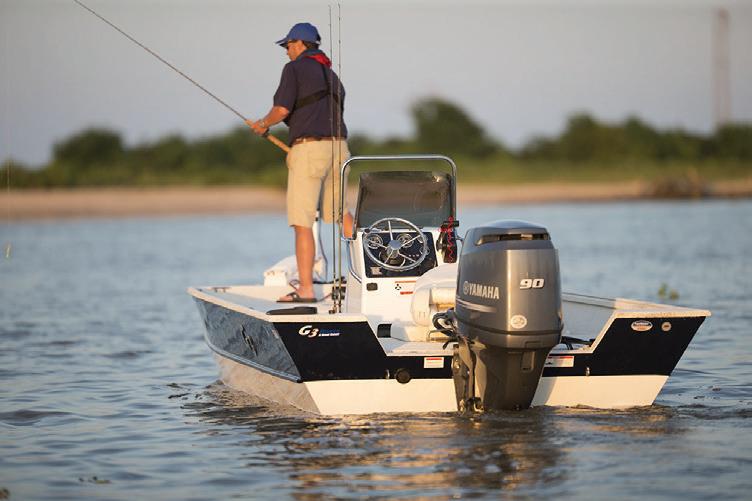
4 minute read
A round the Reef
By Ashley Misiaszek Grotewold Communications Intern
Gray’s Reef National Marine Sanctuary
Advertisement
There is always that point when the seasons begin to shift, and you can feel change coming. Nothing beats that hopeful feeling of new beginnings and altering your focus. When that next season starts, you feel renewed. This is how Gray’s Reef felt as we transitioned into an unexplored season by welcoming Stan Rogers as our superintendent this past August. The sanctuary has been without a permanent superintendent for a few years now, making Rogers’ addition an exciting leap into uncharted waters that Gray’s Reef has eagerly embraced.
His new role also serves as a sort of homecoming for Rogers. He was born and raised in the Lowcountry of South Carolina in Hampton County, where he grew up the son of a South Carolina Department of Natural Resources biologist. He spent his childhood living on the Webb Wildlife Center with thousands of acres of longleaf pine flatwoods and swamps to explore. He was also introduced to the beauty and power of the Pacific Ocean at an early age from many visits with his mother’s family in Chile, South America.
Rogers attended Clemson University in the upstate of South Carolina where he obtained a degree in Aquaculture, Wildlife, and Fisheries Biology while working with the university and SCDNR on the black bear project. Not long after, he began his career as a “terrestrial” wildlife biologist, but quickly shifted to coastal and ocean policy and conservation. He has held positions that allowed him to gain experience in matters in most coastal states, Alaska, Hawai’i, the U.S. Virgin Islands, and overseas locations including Greenland.
Rogers’ career within NOAA began in 2011 when he took a position with Headquarters NOAA Fisheries in Silver Spring, MD. There he worked as an Endangered Species Act consultation biologist, working primarily with the U.S. Navy on training and testing activities worldwide. From there he joined the Office of Habitat in NOAA Fisheries to supervise policy, strategic planning, and communications functions for the NOAA Restoration Center. Now, he has transitioned to becoming the Superintendent of Gray’s Reef National Marine Sanctuary in the Office of National Marine Sanctuaries, which is part of NOAA’s Ocean Service.
I wanted to know more about the man who will be overseeing the sanctuary that I’ve grown to know and love. In an interview, I asked Rogers a little about himself, what one must do to become the superintendent of one of NOAA’s national marine sanctuaries, and what his presence will bring to Gray’s Reef.
“My career to date has been primarily focused on the applied natural resource conservation, and regulatory compliance side of federal land management. It follows NOAA’s mission of serving and recovering threatened and endangered species, managing fisheries, and the habitats upon which they rely. My experience in conservation, management and policy directly aligns with the resource protection arm of Sanctuaries and compliments the research and monitoring component.”
Of course, every new job comes with its own challenges. Like any organization, transition in leadership is a critical time. Rogers’ goal is to build on successes of the incredible staff and previous leadership, while setting a course together along with our partners for the future.
This plan involves ensuring protection of sanctuary resources while providing recreation and creating research opportunities.
So, what does it take to reach these goals?
The daily life of a superintendent varies depending on the topic at hand. Rogers explains that one day might focus on communicating research needs within NOAA and with partners, issuing a permit to conduct an activity that affects sanctuary resources, or budget development and resource allocation decisions. With his position, some days are also focused on facilities and equipment such as our small boats the R/V Sam Gray and the R/V Joe Ferguson. Rogers says the best days, of course, are when he is able to join the team and partners on the water in Gray’s Reef for research and dive operations.
As far as what Rogers is looking forward to as Gray’s Reef’s new superintendent, there are a few things. He is excited about being a steward of this national treasure and increasing awareness of Gray’s Reef well beyond coastal communities, explaining that this can only be done effectively by working closely with partners and local communities. Rogers has plans to strengthen existing partnerships with federal, state, and local governments, non-governmental organizations, and the community. He’s ready for Gray’s Reef to engage with interested stakeholders to potentially forge new partnerships and garner greater support of resource protection, research needs and opportunities at Gray’s Reef.
When asked if he could give advice on pursuing a career similar to his, Rogers’ response was filled with realistic guidance.
“Pursue a career in something you love. You will stay inspired throughout your career and make the biggest impact doing something you’re passionate about. If you’re interested in leadership, be well rounded in policy, conservation principles, program management, and scientific research. We need it all. Science informs management and policy decisions.”
Outside of his career, Rogers spends his days with his wife and two daughters. He loves to travel and enjoys many outdoor activities including kayaking, boating, fishing, hiking, camping, and the beach. He also dabbles in nature photography and plays guitar.
Along with this new career change, Rogers is glad to be back near the coastal communities he grew up with.
“Every time I return home to the Lowcountry of South Carolina and Georgia, I am reminded of the treasures of the coast. The live oaks adorned with Spanish moss, bottomland swamps and rivers, coastal marshes and estuaries, unspoiled barrier islands and beaches, the colorful sunrise and sunsets along the coast, and of course, the amazing people and food. These are all things I am enjoying and exposing my family to now that we are here.”
For more information, email: michelle.riley@noaa.gov or call (912) 598-2345













